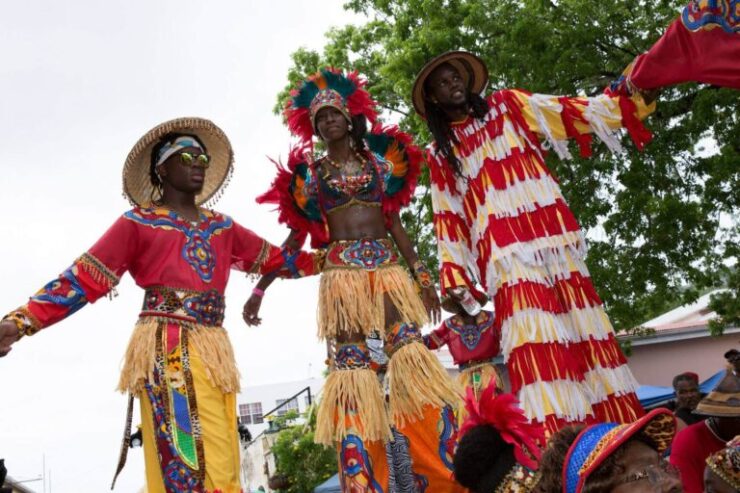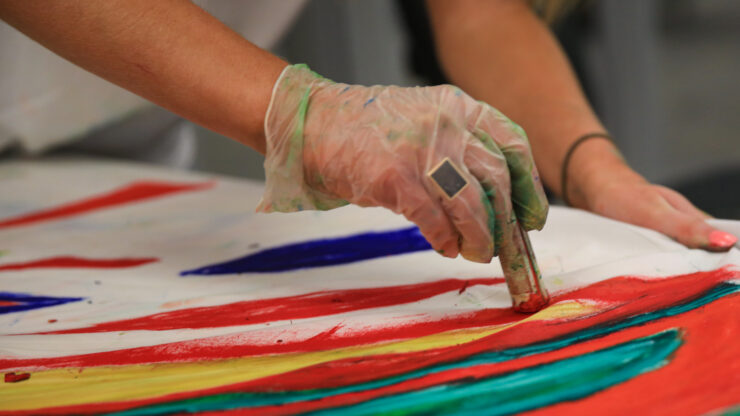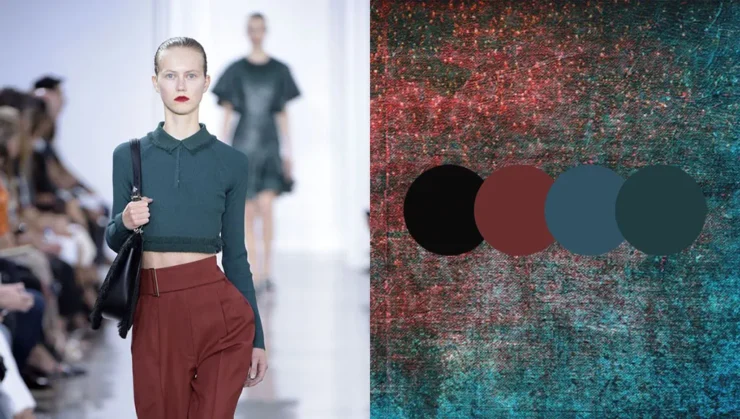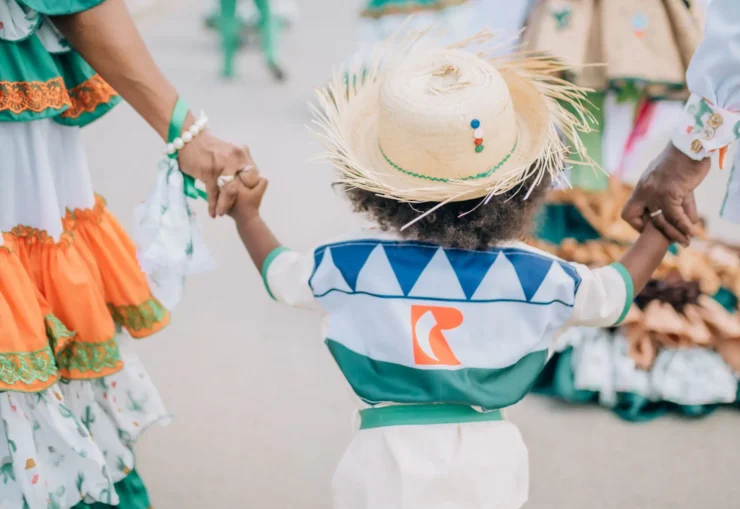Table of Contents
The Caribbean is not only home to shimmering beaches and sumptuous cuisine but also an evolving tapestry of fashion. At its epicenter, the Virgin Islands boasts a distinct and influential style narrative. Let’s explore this kaleidoscope of Caribbean couture.
Traditional Clothing

At the heart of this archipelago’s fashion lies its rich history. In days past, clothing signified one’s societal standing, with distinct garments and embellishments for various classes. White cotton dresses, for instance, were staples among women, often adorned with intricate lace and ruffles. Visit high tide clothing to browse such collections.
Yet, men typically donned breeches, waistcoats, and wide-brimmed straw hats. These garments were functional, catering to the region’s climate, and protecting wearers from the relentless sun. From ceremonial wear to everyday attire, traditional ensembles paint a vivid picture of the island’s colonial past.
A unique feature of this region’s heritage wear is the madras fabric. Originally from India, this vibrantly checked material has become synonymous with festivities. Particularly during the Carnival, you’d witness a splash of madras everywhere, from head ties to full ensembles.
Modern Fashion Trends
Fast forward to the present day, and the archipelago’s fashion has transformed. Local designers blend traditional elements with contemporary styles, creating garments that echo the islands’ legacy while resonating with modern aesthetics.
A surge in streetwear can be observed, with many embracing urban trends, fusing them with local motifs. This mix manifests in graphic tees adorned with island slogans or symbols, and even reimagined madras patterns on modern silhouettes, keeping the spirit of the islands alive.
Interestingly, with global fashion moving towards fluidity, the islands aren’t far behind. There’s an uptick in androgynous fashion, with locals challenging traditional gender norms, showcasing the islands’ progressive ethos while retaining their distinctive style narrative.
Fabrics and Textiles in Fashion

A hallmark of Caribbean fashion is the use of breathable, lightweight materials. Given the tropical climate, fabrics like cotton, linen, and silk dominate the scene, providing comfort while exuding elegance. Such textiles aren’t merely choices—they’re necessities in combating the humidity.
Sea Island Cotton, indigenous to the region, boasts of unparalleled quality. Its silky texture and durability have garnered global attention, making it a preferred choice for high-end garments. From airy sundresses to casual shirts, this material promises both luxury and comfort.
Local artisans are weaving magic with traditional materials too. One can find hand-loomed fabrics, intricately embroidered patterns, and beadwork that showcase the islands’ rich artistic heritage. These textiles, imbued with stories and craftsmanship, add depth to the ever-evolving fashion narrative.
Accessories and Jewelry: A Crucial Element
No outfit from the Virgin Islands is complete without its complementing accessories. Jewelry, often inspired by the Caribbean seascape, incorporates shells, coral, and semiprecious stones, embodying the essence of the islands.
Leatherwork too finds its roots in traditional crafts. Artisans mold leather into belts, bags, and even footwear, often hand-stamped with designs inspired by local flora and fauna. These leather goods are not just accessories but pieces of art, speaking of the islands’ artisanal legacy.
Then there are head ties, drawing from the madras tradition, but modernized. They serve dual purposes—protecting against the sun and adding a dash of style. In colors ranging from earthy tones to vibrant hues, they’re emblematic of the region’s fashion duality.
Color Palette and Patterns

The hues of this archipelago’s attire are as varied as its landscapes. Dominated by earthy tones—browns, greens, and blues—the palette mirrors the islands’ natural beauty. It’s as if the azure waters, verdant hills, and sandy shores have weaved themselves into the fabric.
But Virgin Islands fashion doesn’t shy away from vibrant shades. Festivals and celebrations witness a burst of colors—reds, yellows, and purples—that encapsulate the Caribbean spirit. These lively hues, often juxtaposed with intricate patterns, make for eye-catching ensembles.
Patterns too have a story. The previously mentioned madras checks, floral motifs, and abstract designs influenced by island life are omnipresent. Each pattern, be it on a sundress or a shirt, offers a glimpse into the region’s multifaceted cultural narrative.
Seasonal Changes and Weather Considerations
While the Virgin Islands enjoy a relatively consistent tropical climate, subtle seasonal shifts influence fashion choices. The rainy months call for lightweight raincoats and water-resistant footwear, ensuring one remains chic even amidst downpours.
The slightly cooler months, although far from cold, see locals reaching for layers. Light sweaters, shawls, and scarves, often in vibrant patterns, make their way into daily attire. These aren’t just functional but amplify the style quotient manifold.
Beachwear is perennial. Given the archipelago’s vast coastline, swimwear trends see regular innovations. From high-waisted bikinis to sarongs bearing island motifs, coastal fashion remains an integral aspect, marrying functionality with flair.
Sustainable Fashion Initiatives in the Virgin Islands

Sustainability isn’t a mere buzzword here; it’s a way of life. With the global fashion industry facing scrutiny for its environmental impact, the Virgin Islands are pioneering green initiatives. Local brands are increasingly adopting eco-friendly materials and practices.
From using organic dyes to championing slow fashion, these efforts signal a shift towards conscientious consumption. Artisans are repurposing materials, breathing new life into discarded items, and creating fashion pieces that are not only trendy but also eco-responsible.
The emphasis on handcrafted goods, too, underscores sustainability. By supporting local artisans and small-scale industries, the islands are ensuring a reduced carbon footprint while bolstering the local economy—a blend of ethics and aesthetics.
Cultural Significance
Clothing here isn’t just about aesthetics; it’s a cultural statement. Every garment, pattern, and accessory carries with it tales of the islands’ past, its colonial history, its indigenous traditions, and its journey toward modernity.
Festivals like the Carnival serve as fashion showcases. Participants don elaborate, handcrafted costumes that tell tales—from folklore to historical events. These ensembles, often created months in advance, highlight the islands’ rich tapestry of stories and styles.
Fashion, thus, becomes a medium of storytelling, a bridge between the old and the new, a dialogue between the islands’ varied communities. It’s a reflection of identity, resilience, and evolution, painting a vivid sartorial portrait of the Virgin Islands.
Final Thoughts
The Virgin Islands, with their azure waters and golden sands, are more than just a tropical paradise. They’re a sartorial canvas, reflecting centuries of history, cultural amalgamation, and a forward-looking fashion spirit. As the world increasingly looks towards the Caribbean for fashion inspiration, the Virgin Islands stand tall, their style narrative as compelling as their picturesque landscapes. Dive in, embrace, and let the islands’ fashion tales weave magic around you.

